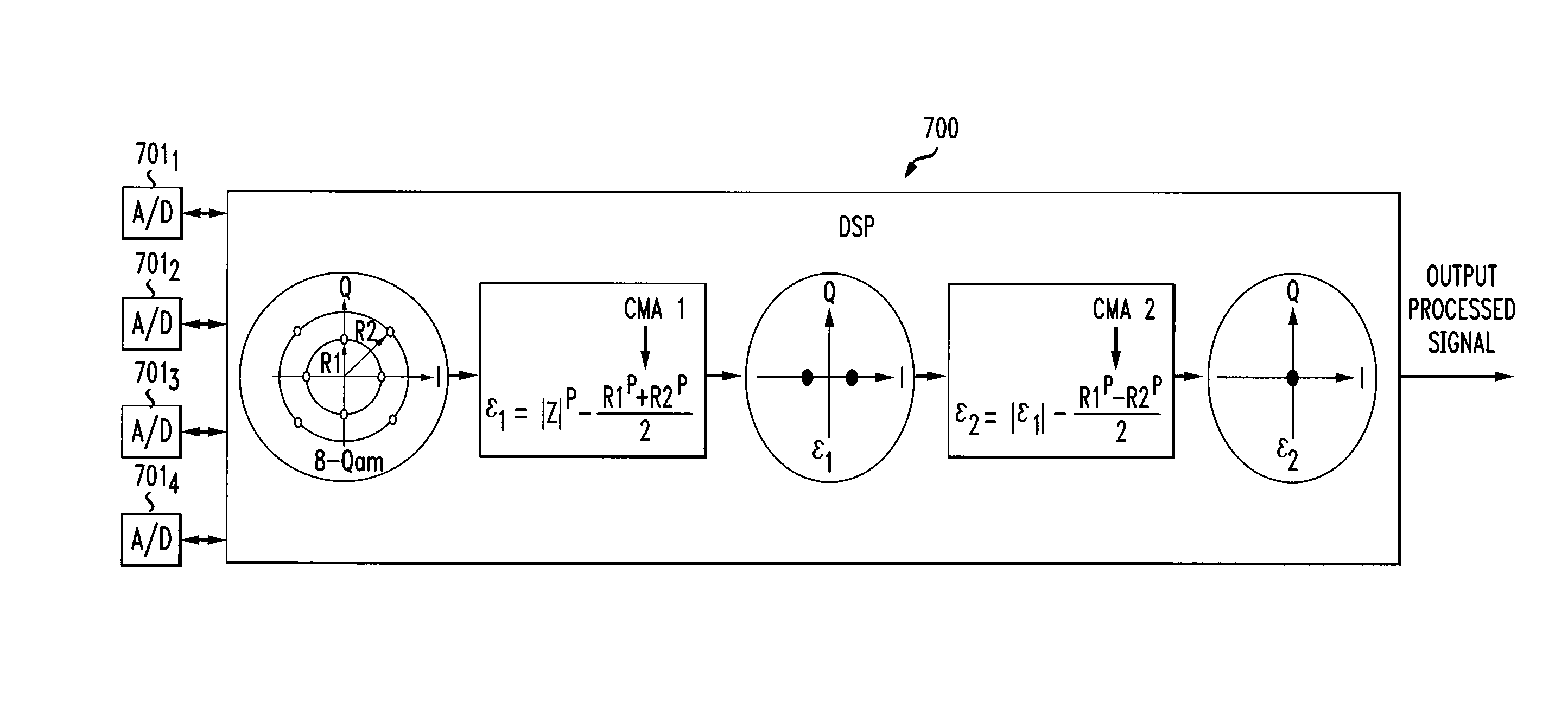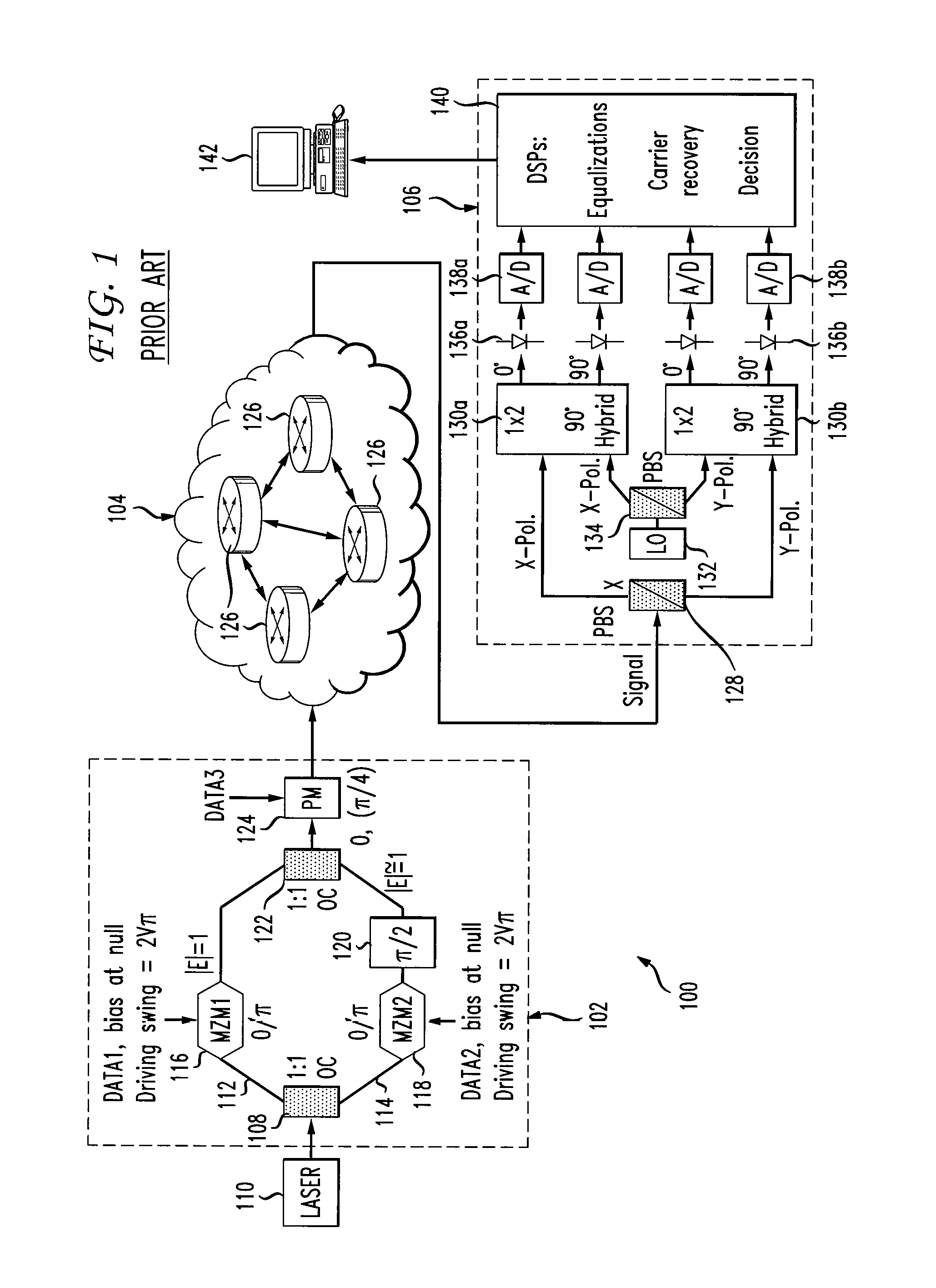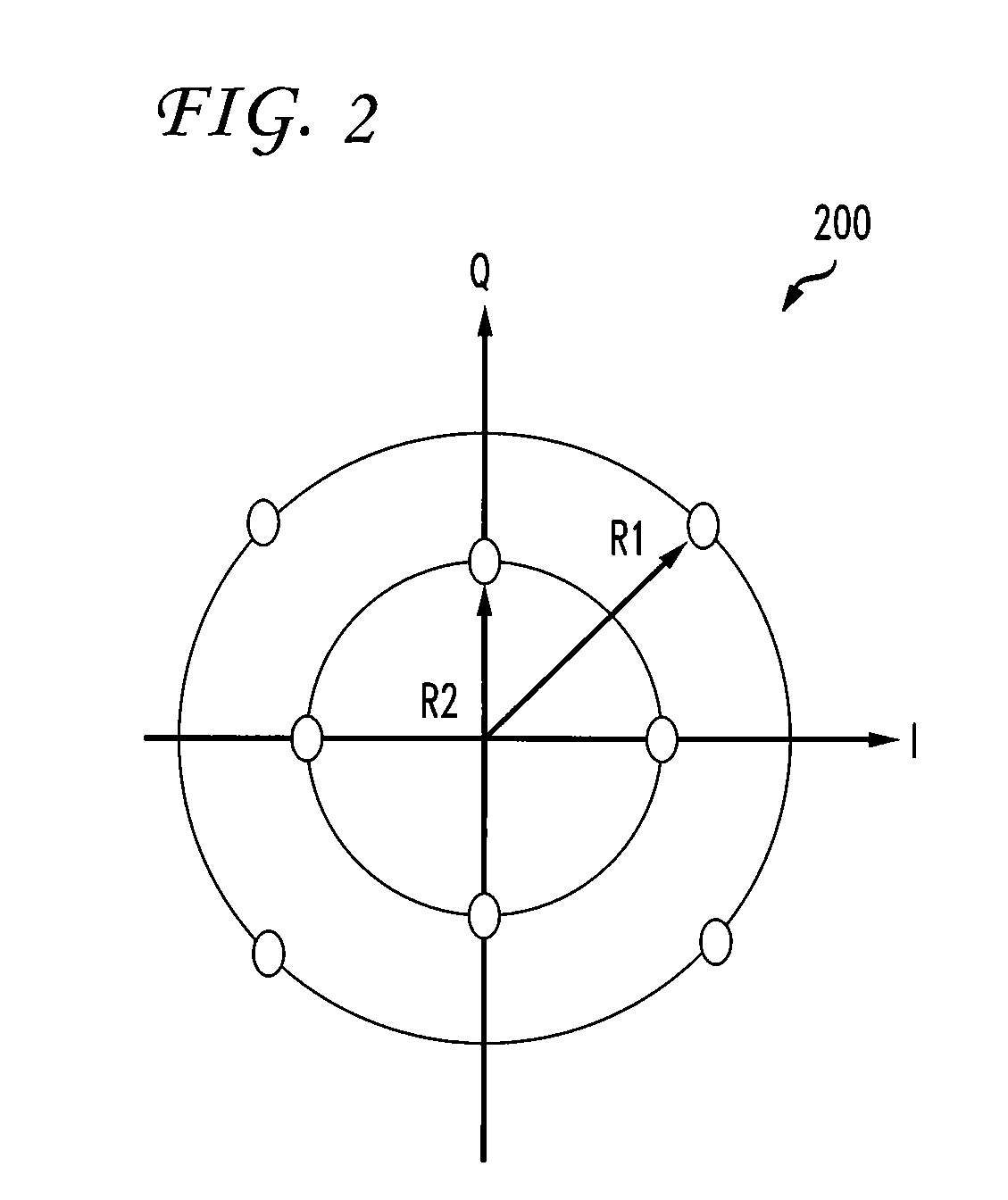Blind equalization algorithms for adaptive polarization recovery and PMD compensation
a blind equalization and adaptive polarization technology, applied in the field of communication networks, can solve the problems of extra noise, local minima, and ineffective traditional cma blind equalization algorithm for polarization demultiplexing and pmd compensation
- Summary
- Abstract
- Description
- Claims
- Application Information
AI Technical Summary
Benefits of technology
Problems solved by technology
Method used
Image
Examples
Embodiment Construction
[0020]Embodiments of the disclosure will be described with reference to the accompanying drawing figures wherein like numbers represent like elements throughout. Before embodiments of the disclosure are explained in detail, it is to be understood that the disclosure is not limited in its application to the details of the examples set forth in the following description or illustrated in the figures. The disclosure is capable of other embodiments and of being practiced or carried out in a variety of applications and in various ways. Also, it is to be understood that the phraseology and terminology used herein is for the purpose of description and should not be regarded as limiting. The use of “including,”“comprising,” or “having” and variations thereof herein are meant to encompass the items listed thereafter and equivalents thereof as well as additional items.
[0021]In accordance with aspects of the disclosure, a blind equalization algorithm is proposed for adaptive polarization recov...
PUM
 Login to View More
Login to View More Abstract
Description
Claims
Application Information
 Login to View More
Login to View More - R&D
- Intellectual Property
- Life Sciences
- Materials
- Tech Scout
- Unparalleled Data Quality
- Higher Quality Content
- 60% Fewer Hallucinations
Browse by: Latest US Patents, China's latest patents, Technical Efficacy Thesaurus, Application Domain, Technology Topic, Popular Technical Reports.
© 2025 PatSnap. All rights reserved.Legal|Privacy policy|Modern Slavery Act Transparency Statement|Sitemap|About US| Contact US: help@patsnap.com



